Antique, Japanese, (Meiji Period) 3 Legged Bronze Hibachi (late1800s-early1900s)
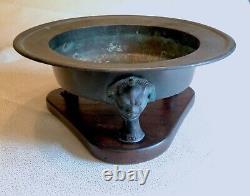
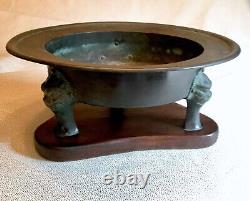
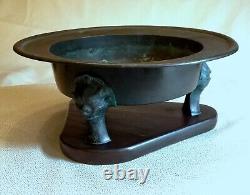
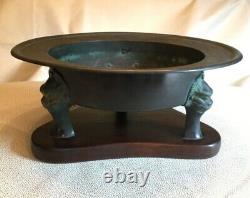
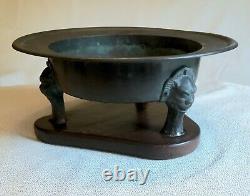
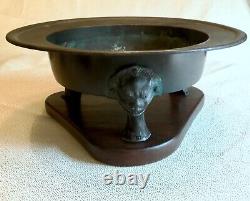
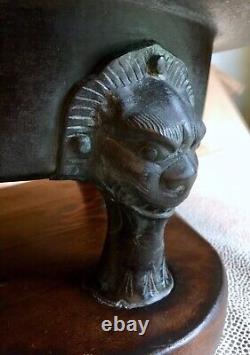
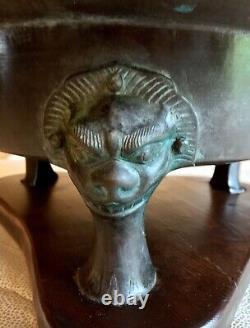
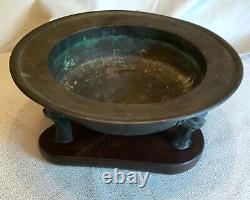
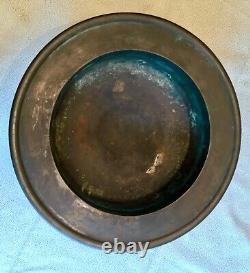



Antique Japanese Bronze and Wood Hibachi Brazier from the late 1800's-early 1900's. The three legs each wear a Shishi mask and support the bronze bowl / anchored to a slightly curved triangular shaped wooden base. Unknown as to the type of wood.
The wood has been oiled a few times over the last eight years to avoid drying and splitting. The underside of the wood base has a full covering of black felt to protect other furniture surfaces. The production of this piece falls into the Meiji period January 25, 1868 - July 30, 1912. With a new government reformation, Japan experienced a renaissance of sorts.
Exposure to outside influences from other cultures brought about a noticeable reflection of the changing times in politics, lifestyle and of course design styles and aesthetics. Brighter colors, more fanciful botanical and animal themes gained popularity. The Shishi mask motif, the dragon like face, on the three legs, exemplifies such a typical design element from the Meiji timeline.
If there is a viewer who has alternate information on its origin or time period, I welcome a private message? The "bowl" including the wide lip, measures 15.875across (40cm). The bowls mouth/opening is 11w (30cm) x approx. The height from base measures approx. The triangular, wood base measures approx. 13" (33cm) x 11" (28cm).As far as history of this piece's time here in this country, all I know is it and about a dozen others were imported from Japan by a dealer in San Francisco. I love this piece but I find myself unexpectedly downsizing my living space.
I hope this piece will move on to another owner who will love it as much as I do. Please feel free to ask questions or request any additional images. Thanks for looking at this item.

